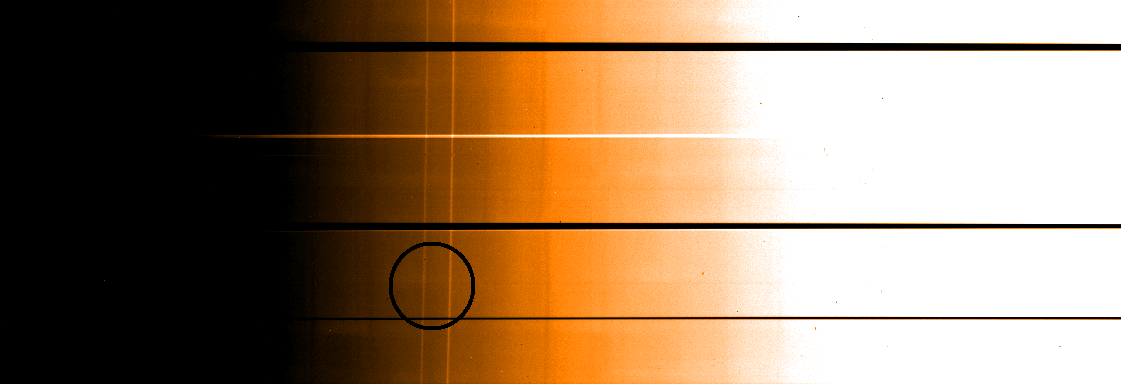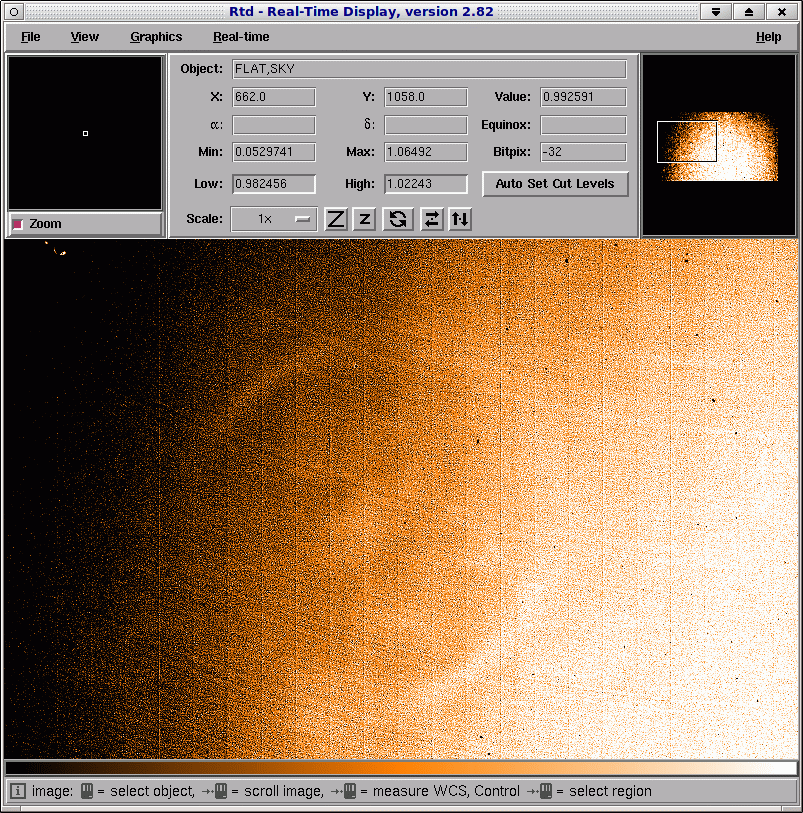|
This page summarizes known problems with historical data of FORS2. For more up-to-date
information regarding FORS2 calibration frames see the "History" section of the
Trending & QC1 pages.
Problems may also be related to the pipeline processing.
| Detector |
|
|
|
| Imaging |
|
|
|
| Polarimetry |
|
|
|
| MXU |
|
|
|
| top Optical reflections in PMOS flats |
2011-06-01: PMOS lamp flat spectra show for the 1200B grism and in particular for the 600B grism a feature (a ghost, an optical reflection image of the slit) on the blue side of the PMOS spectra. The pipeline does not mask the reflection feature.
 |
extraction of a G1200B grism PMOS lamp flat spectrum |
 |
extraction of a G600B grism PMOS lamp flat spectrum |
|
top
World Coordinate System problem |
2011-06-01: We recently noticed that for unbinned data (1x1) the world coordinate system (WCS) for the lower CCD is wrong. If you need a WCS for the lower chip please use fsmosaic to combine the upper and the lower chip into one frame. This combined frame will have the (correct) WCS of the upper chip.
|
top
Artefacts in IPOL data |
In IPOL observations from 2009 artefacts were noticed, for which an example is shown below (retarder plate angle clockwise from top right: 0, 22.5, 45, 67.5 degrees). The artefact is the column of dots on the left of each image. Checks showed that
- At a given retarder plate angle the artefacts move in opposite X/Y direction of 'normal' targets.
- At a given position the artefacts move with increasing retarder plate angle to positive Y, while 'normal' targets remain fixed.
- Additional artefacts appear at retarder plate angle 45.0/67.5.
- The image quality of the artefacts scales with general image quality
The most probable cause for these artefacts are reflections at the retarder plates.
|
top
Feature in FORS2 imaging twilight flats |
From early 2010 to November 20, 2010 a ring-like feature appears in FORS2 twilight flats, which moves with the rotator angle. In November the LADC was cleaned, which removed the feature. Below an example for the R-band is shown. Similar effects have been observed before (Moehler et al. 2010, PASP 122, 93 and overview). This limits the achievable photometric accuracy to about 5%.

|
top
Zeropoint for retarder plate angle changed |
2010-04-16: We recently noticed that at some time during P84 the zero point of the angle
of the retarder plate changed. We are still investigating when this happened
and how it will affect the results. Until then please do not use the polarimetric pipeline products for scientific analysis as they may provide wrong results
Since early 2008 the FORS2 bias sometimes showed a vertical pattern of dark and bright stripes of varying width and intensity. The pattern can change from one exposure to the next, including appearing and disappearing, and has an amplitude of few ADU.
Therefore the effect will be visible only in observations with a very low background (or overall low signal). An example is shown below (HR collimator image with cuts 214,230). The problem has been solved end of June 2010.

|
top
Header keywords for MXU calibration data |
When a sequence of calibration data for different masks is taken, data with a low number of slitlets taken after data with a high number of slitlets would inherit the additional slitlet keywords from the previous observation. This problem has been fixed on November 13, 2006.
Example: Calibrations for a mask with 20 slitlets are taken after calibrations for a mask with 47 slitlets. In that case the calibrations for the mask with 20 slitlets would inherit the following keywords for slitlets 21 to 47 (33 being the number of the slitlet):
- HIERARCH ESO INS TARG1## NAME
- HIERARCH ESO INS MOS1## RA
- HIERARCH ESO INS MOS1## DEC
- HIERARCH ESO INS MOS1## WID
- HIERARCH ESO INS MOS1## LEN
- HIERARCH ESO INS MOS1## POSANG
- HIERARCH ESO INS MOS1## WIDTH
- HIERARCH ESO INS MOS1## SHAPE
- HIERARCH ESO INS MOS1## XPOS
- HIERARCH ESO INS MOS1## YPOS
|
top
Color Equations for FORS2 filters |
Q: I have photometric stars taken during the
night in R_special filter, but I only have the R magnitude for them from
Landolt standard catalogs. So, I need to know if you have the color
equation to do the conversion between R magnitudes and R_special
magnitudes.
A: The colour terms for the R_special filter can be found in the PHOT_TABLE files (fors2_1453_phot.fits, fors2_1456_phot.fits), that are delivered with the FORS2 pipeline. The term is -0.0095598 and it should be applied with the colour V-R. However, it is a surprise that your data have Landolt standard star fields, because by default the Stetson fields are used for FORS2. Please verify that you need to use the Landolt catalogue. If so, a different SExtractor configuration file for the pipeline is needed, because the magnitudes in the Landolt catalogues are determined differently from those in the Stetson catalogue. The parameters to be changed are
- PHOT_APERTURES=56
- MASK_TYPE=NONE
- BACK_PHOTOTYPE=GLOBAL
- BACK_SIZE=64
- DETECT_THRESH=3
and you find the file fors.sex in the software installation directory of the pipeline under share/esopipes/fors-version/config/
|
![[ ESO ]](/images/eso-logo.gif)
![[ ESO ]](/images/eso-logo.gif)
